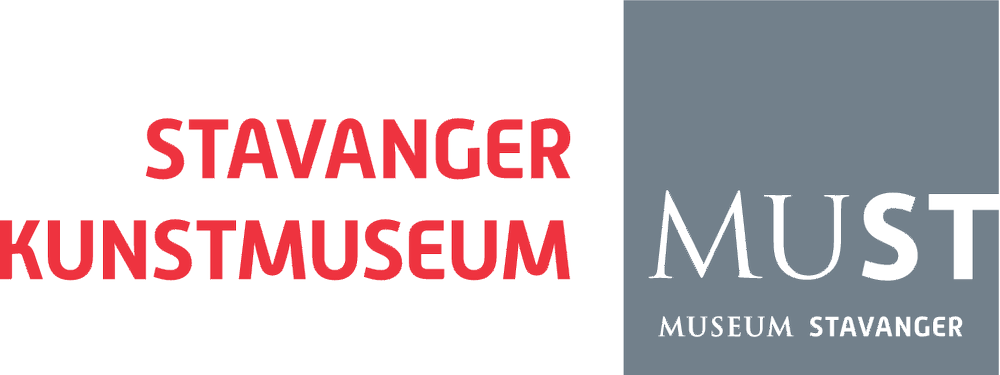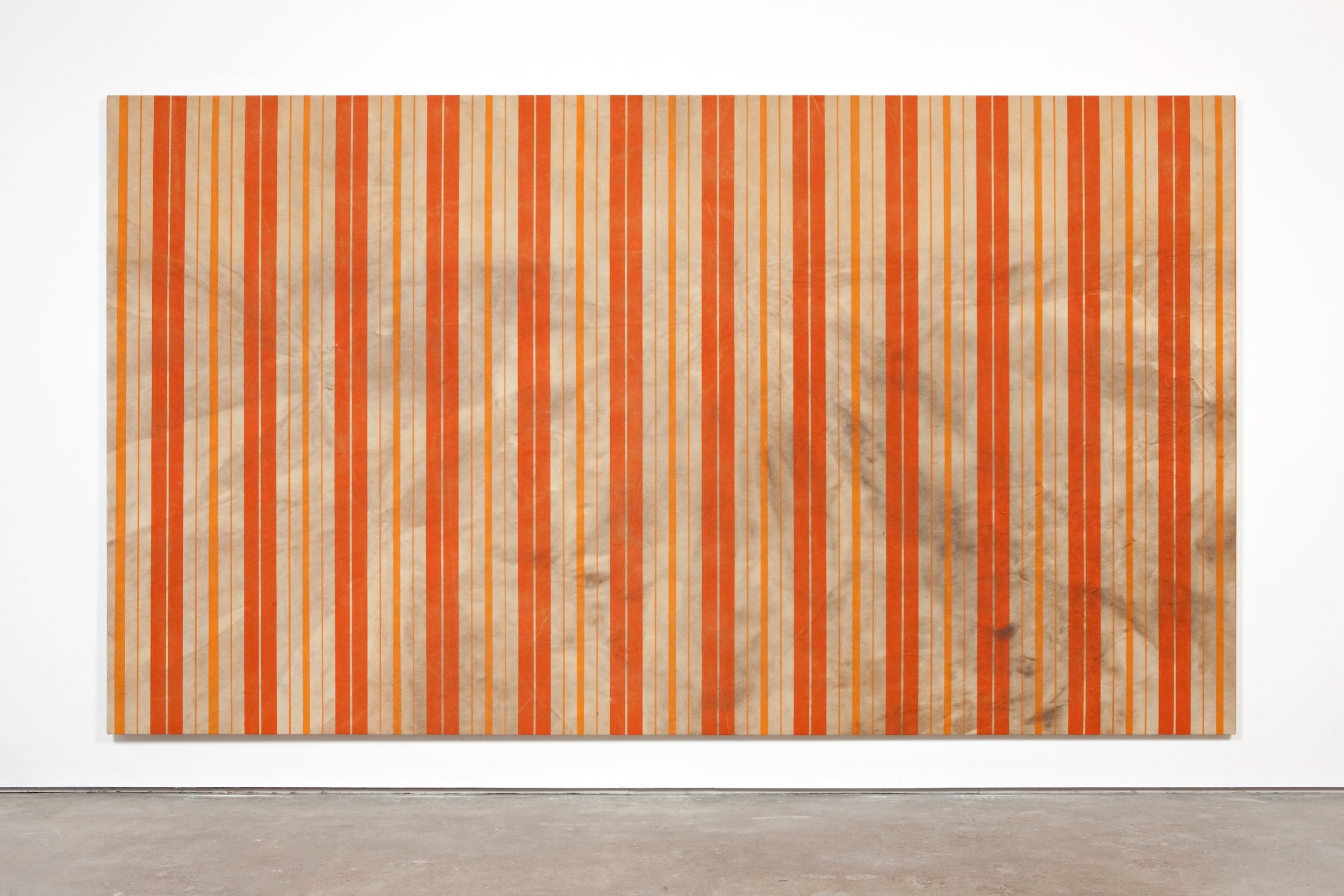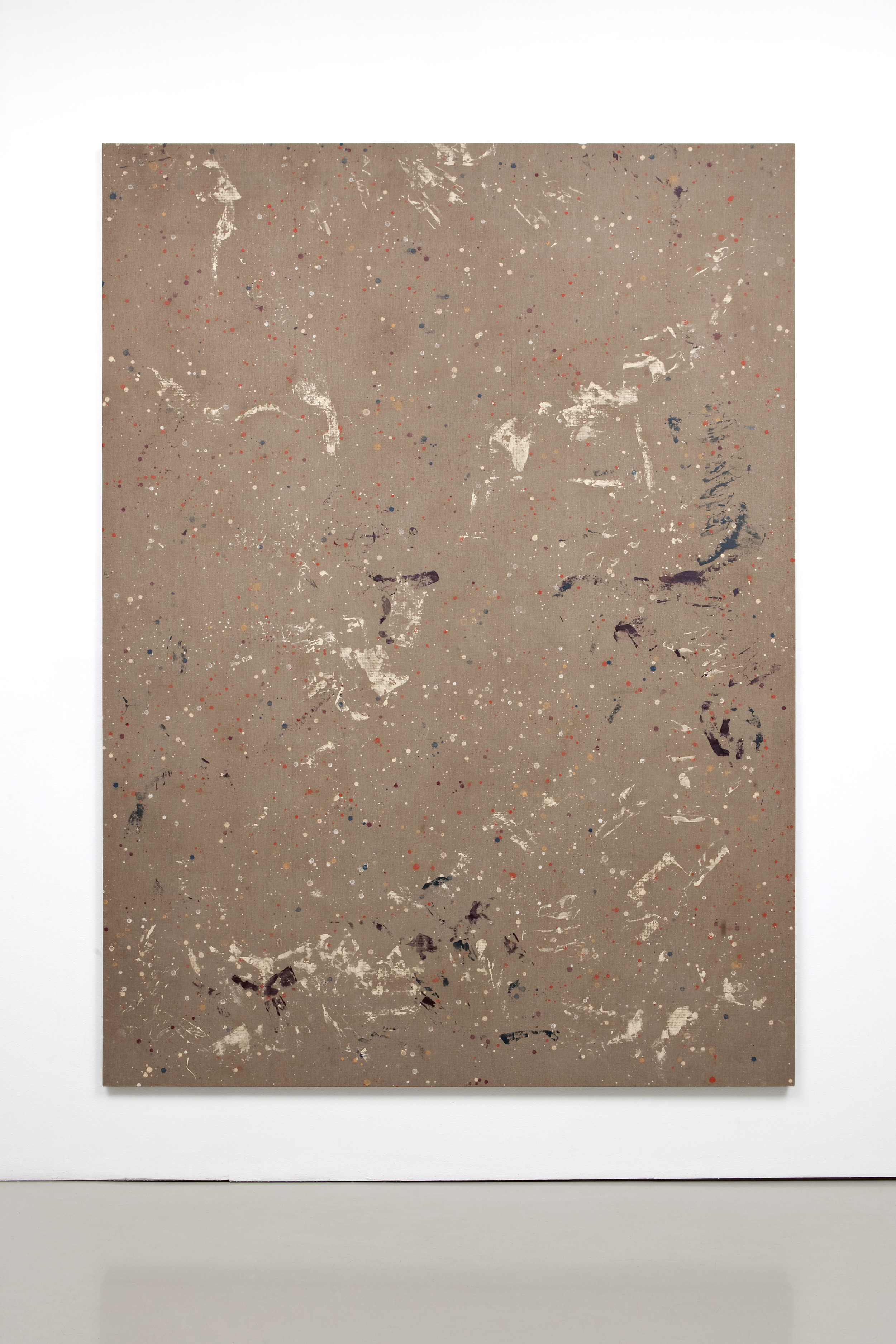Fredrik Værslev
Born 1979, Moss. Lives and works in Drammen.
Without doubt, Fredrik Værslev holds a central position in re-actualizing neo-modernistic abstract painting, not only in Norway but internationally. His paintings are rooted in an encounter between architecture and painting; he seems to be asking where the distinction might lie between craft and art. His works hold visual references to several of Modernism’s painterly pioneers, but these references are combined with a rough, everyday aesthetic that results in alternation between abstraction and figuration. The use of everyday objects in combination with a visual idiom referencing Modernism is something we find in works by several of Værslev’s colleagues at the gallery STANDARD (OSLO), for instance Matias Faldbakken and Gardar Eide Einarsson. Værslev, however, has developed his own unique project that emphasizes the painting process in its own right.
At first glance, the painting Untitled (2012) appears to have much in common with Jackson Pollock’s abstract Action Paintings from the 1950s. To make these works, Pollock used expressive gestures to throw paint across canvas he had rolled out on the floor. Untitled is from a series Værslev made on the theme of terrazzo flooring: an affordable imitation of marble which was developed in Venice over 500 years ago. Terrazzo consists of a mixture of bits of quarts, granite, glass and marble mixed with a cement binder. This type of flooring was often used in official public buildings in Italy, but in Norway we tend to associate it with entryways from apartment buildings and schools built from 1930 to 1960. The idea of doing artistic research on terrazzo surfaces arose when Værslev was exhibiting some of his works at a gallery in Venice that had original terrazzo flooring. His series therefore has site-specific relevance. Nevertheless, the artist is more concerned about the creative process undergirding the work, and the random effects emerging during the creation process. The terrazzo series, which was made in the garden of his family home in Drøbak, involved painting untreated canvases with spray paint, house paint and white spirit. The paintings lay outside from May through October, being affected by rain, falling leaves and the bleaching sun. This treatment reminds us of Edvard Munch’s ‘horse cure’, where he put his paintings outdoors to give them a certain patina. Like Munch, Værslev aestheticizes the random effects and disintegration arising from nature’s own treatment.
Like the terrazzo pictures, Untitled (Canopy Painting, Cream and Orange VII) (2012) is a representation of something from everyday life with a weather-bitten patina: a canvas awning. There is also a clear reference to modernist art, for instance to Barnett Newman’s strict compositions of pure colour-fields divided by vertical stripes. The divided stages in Værslev’s painting involved an equally careful measuring and spray-painting of the striped fields, which were then exposed to weather and wind. The controlled painting process was combined with the weather’s unpredictable interventions, just as with awnings on houses. The result is a work that in the same way as the terrazzo paintings, is experienced as ambiguous – as both abstract and representational. Værslev has previously also worked with the theme of ‘unpainterly’ paint surfaces and techniques, as in the project Lerkesvingen (2010), which involved painting a gallery’s walls the same number of times as the garages in his childhood neighbourhood had changed colour over the last 20 years. Garage painting is a practical task that also says a great deal about trends and neighbourhood taste. In projects such as this, or in the series where he paints with tools used for purely practical tasks such as making lines on a sports field, the artist appears to be asking questions about the difference between practical painting tasks and the elevated artistic process of painting.
Text by: Ida Sannes Hansen



